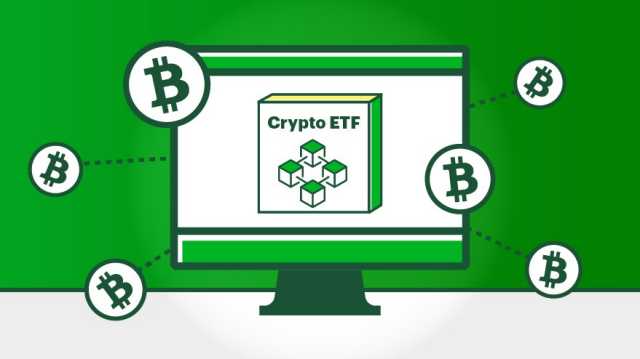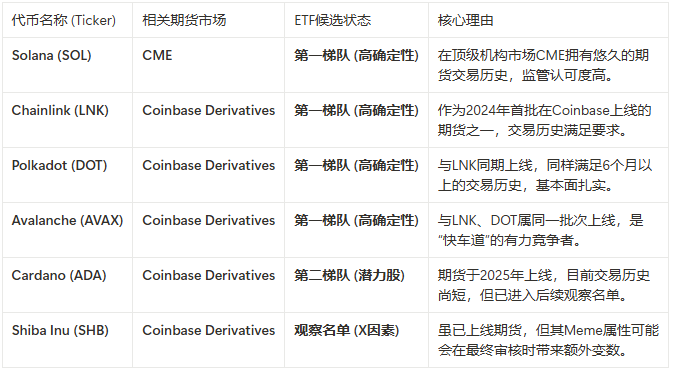The new regulations will accelerate the integration of crypto assets into traditional finance, and Coinbase's ecosystem advantages make it a key hub connecting the two fields.
Written by: Luke, Mars Finance

In January 2024, the approval of the Bitcoin spot ETF marks a successful "beach landing" for crypto assets into the stronghold of traditional finance. However, the real "Normandy moment"—the decisive, organized, and large-scale landing of the "main force"—is quietly beginning with a seemingly mundane regulatory document released recently.
Recently, the rule change proposals (SR-CboeBZX-2025-104, etc.) submitted by Cboe BZX Exchange and Nasdaq are attempting to establish a "universal listing standard" fast track for altcoins. This is not a small-scale reinforcement but a carefully planned "institutional landing." Its core tactics are twofold: first, to open a standardized highway that allows subsequent troops (altcoin ETFs) to continuously enter; second, to quietly add a "new weapon" to the arsenal—staking yields that are "tacitly approved" by regulators.
In this grand vision of financial transformation, when we carefully examine the geographical location of the "landing site" and the controllers of the "logistics supply line," one name stands out: Coinbase. This largest crypto exchange in the United States is inadvertently pushed to the throne of "biggest winner" by this new regulation due to its unparalleled ecosystem advantages.
From Case-by-Case Approval to Highway
Previously, the birth of any crypto ETF had to undergo the SEC's long and rigorous "case-by-case approval," filled with uncertainty. The new "universal listing standard" completely changes the game rules, with its core being: any crypto asset whose futures contracts have been trading stably for six months in a CFTC-regulated market (such as CME or Coinbase Derivatives) is eligible to be listed via the "fast track."
The SEC's intention is to establish a scalable regulatory framework, but objectively, this has delegated part of the approval power. The new power center has shifted from the SEC office in Washington to the doorsteps of platforms that can provide compliant futures trading.
While CME is also one of them, it focuses more on large-cap assets like Bitcoin and Ethereum. For the vast world of altcoins, the true "beachhead" is undoubtedly the Coinbase Derivatives Exchange. It has the flexibility and willingness to list a more diverse range of altcoin futures. Therefore, whether a project can turn its token into an ETF now hinges on the first and most critical hurdle: lobbying SEC lawmakers has transformed into the effort to launch its futures product on Coinbase Derivatives.
The First Wave of Landing Troops: The Candidate List is Clear
This clear set of rules allows us to break free from pure speculation for the first time, enabling us to directly identify the first batch of "landing troops" based on a clear formula. These "vanguard troops" have completed their "pre-battle drills" in the compliant futures market, fully armed and ready for the charge.
Based on this logic, the first batch of altcoin ETF candidates most likely to be approved has emerged:
Candidates from the Coinbase camp include: Avalanche (AVAX), Chainlink (LNK), Polkadot (DOT), and even the highly popular Shiba Inu (SHB). The futures contracts for these tokens have been filed or launched on Coinbase Derivatives in 2024, and by the time the new regulations are officially passed, their "service" time will far exceed the six-month hard requirement.
- A heavyweight candidate from the CME camp is Solana (SOL), whose futures products have been operating stably on the institution-heavy CME, providing a strong compliance foundation.
- Therefore, while the market is still hotly debating "who will be approved next," the answer is already hidden in the public information of the exchanges. This batch of assets will be the first wave of ETF products to hit Wall Street after the new regulations are passed. Following them will be assets like Cardano (ADA), which have a later futures launch and form the "second tier."

Why Coinbase is the "Chosen One"
If becoming the "gateway" is the strategic advantage brought by the new regulations, then the provisions regarding staking directly point to enormous commercial benefits. When we can foresee the emergence of a "Solana ETF with staking yields" or a "Polkadot ETF," we can understand the power of this provision.
The new regulation 14.11(e)(4)(G) cleverly stipulates that as long as the ETF issuer can ensure that 85% of the assets are redeemable at any time or establish a comprehensive "liquidity risk management plan," then ETF products that include staking yields are permitted. This effectively "tacitly approves" the packaging of the native yield mechanisms of the DeFi world into Wall Street's most mainstream financial products.

And who is the biggest beneficiary of this business? It is still Coinbase. As one of the largest and most trusted institutional-grade staking service providers globally, Coinbase Custody is almost the preferred partner for all ETF issuers. Regardless of which token from the aforementioned list is turned into an ETF with staking, Coinbase will earn service fees and revenue sharing by providing custody and staking services, leading to explosive growth in its staking business department.
Overall, the SEC's new regulations are like a tailored gift for Coinbase's "full-stack" business model. They perfectly connect every link in the Coinbase ecosystem, forming a powerful business flywheel:
- Futures Market (Entry): Coinbase Derivatives becomes the "qualification certification center" for ETFs, attracting all project parties eager to be accepted by the mainstream to "pilgrimage," bringing trading volume and listing fees.
- Staking and Custody (Engine): Coinbase Custody becomes the "core infrastructure" for staking ETFs, providing services for the underlying assets of future ETFs like AVAX, SOL, and DOT.
- Spot Market (Foundation): The subscription and redemption mechanism of ETFs will bring massive trading depth and fee income to Coinbase's spot market.
- Regulatory Cooperation (Moat): ETF issuers must sign "monitoring sharing agreements" with the underlying futures market, making Coinbase an indispensable "regulatory technology" partner for Wall Street giants like BlackRock and Fidelity in the altcoin space.
This series of interconnected advantages transforms Coinbase from a leader in the crypto industry into a "core hub" connecting the crypto world with traditional finance.
Conclusion: From "Monitoring the SEC" to "Focusing on Coinbase"
Just as the "D-Day" marked a turning point in the European theater of World War II, the introduction of the "universal listing standard" also marks a turning point for the integration of crypto assets into mainstream finance. It heralds the arrival of a new era: an era driven by clear rules, capable of large-scale replication of altcoin ETFs.
In this grand historical process, the SEC, through a clever institutional design, has not only solved its own regulatory challenges but also inadvertently "crowned" a new king. The market's focus may shift from day-to-day speculation on the SEC's stance to more practically paying attention to Coinbase's next moves—because each of its futures listing decisions could be sounding the horn for the next ETF, clearly visible on the list, to land on Wall Street.
免责声明:本文章仅代表作者个人观点,不代表本平台的立场和观点。本文章仅供信息分享,不构成对任何人的任何投资建议。用户与作者之间的任何争议,与本平台无关。如网页中刊载的文章或图片涉及侵权,请提供相关的权利证明和身份证明发送邮件到support@aicoin.com,本平台相关工作人员将会进行核查。




